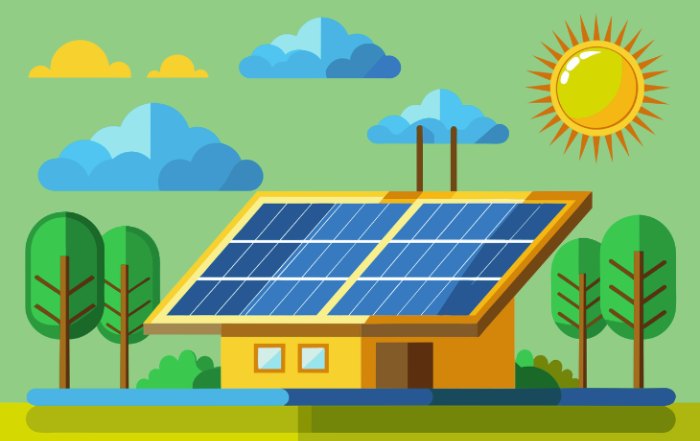As the world accelerates toward a cleaner and more resilient future, renewable energy has emerged not only as an environmental necessity but also as one of the most dynamic and profitable sectors for sustainable investment. In 2025, global economies are no longer debating whether renewable energy is viable — they are instead competing for leadership in the transition. For businesses seeking to combine profitability with purpose, the renewable energy sector offers a compelling opportunity to align with planetary priorities while driving long-term value. On eco-natur.com, the focus is on understanding how these investments serve both corporate sustainability goals and societal good, demonstrating that renewable energy is not just an industry — it is a moral and economic evolution.
The shift from fossil fuels to renewable energy represents one of the largest structural transformations in human history. The International Energy Agency (IEA) projects that renewables will account for over 50% of global electricity generation by 2030, propelled by falling technology costs, rising consumer demand for sustainable products, and supportive policy frameworks. Yet, beyond the numbers lies a deeper narrative: companies are now integrating sustainability into their business DNA, where investing in renewable energy is synonymous with building trust, brand equity, and long-term stability.
Learn more about sustainability and how it shapes future business landscapes through responsible energy choices.
A Global Transition: From Cost to Competitive Advantage
A decade ago, renewable energy was often viewed through the lens of high initial costs and uncertain returns. Today, those perceptions have been overturned by data, innovation, and market performance. Solar and wind power are now the cheapest sources of new electricity generation in most parts of the world, with the U.S. Energy Information Administration (EIA) reporting that the levelized cost of electricity from renewables has dropped below that of coal and natural gas.
The integration of solar photovoltaics, onshore and offshore wind, and battery storage systems has redefined the economics of energy. Corporations that once considered renewable projects as a marketing exercise now treat them as critical financial assets. In regions such as the European Union, corporate renewable energy purchasing has grown exponentially, supported by the European Green Deal and initiatives that reward energy efficiency and carbon neutrality.
In countries like the United States, Canada, and Australia, businesses are capitalizing on renewable investments not merely to offset emissions but to hedge against volatile fossil fuel prices. Meanwhile, nations such as Germany, Sweden, and Denmark are leading in renewable integration, with over 70% of their power mix expected to come from clean sources by the end of the decade. These global examples underscore a defining truth: sustainability has become a measurable advantage rather than an optional expense.
For readers committed to sustainable living, this evolution demonstrates how purpose-driven investments align environmental stewardship with real-world profitability.
Corporate Leadership in Renewable Energy
The most successful renewable energy investments are being led by corporations that view sustainability as integral to their strategic identity. Apple, for instance, has powered all its facilities with 100% renewable energy since 2018 and continues to push suppliers toward the same goal through its Clean Energy Program. Google and Microsoft have not only achieved carbon neutrality but are also investing heavily in next-generation renewable projects, such as geothermal and advanced storage, to reach net-zero emissions by 2030.
Amazon’s Climate Pledge further exemplifies how corporate ambition translates into scalable impact. The company is now the largest corporate purchaser of renewable energy globally, investing in more than 400 wind and solar projects that collectively generate enough power for millions of homes. These cases show that renewable energy is no longer a corporate afterthought — it is a central pillar of competitive differentiation, operational efficiency, and investor confidence.
Through such initiatives, corporations are demonstrating that sustainability yields measurable financial outcomes: lower operational costs, reduced carbon risk exposure, enhanced brand reputation, and greater appeal to sustainability-focused investors. Institutional investors are rewarding companies that integrate renewable energy into their long-term strategy, while those lagging behind face growing scrutiny from both regulators and consumers.
To explore how responsible investment strategies reinforce these trends, visit eco-natur.com/sustainable-business.html.
Financing the Future: Green Bonds and ESG Investment Growth
The financial sector has become the backbone of renewable energy expansion. The rise of green bonds, ESG (Environmental, Social, and Governance) funds, and impact investing has created an unprecedented flow of capital into clean energy ventures. According to BloombergNEF, global ESG assets surpassed $50 trillion in 2025, a figure driven by investor demand for transparency and sustainability-linked performance.
Financial institutions are adapting to this shift by embedding environmental risk assessment into lending and portfolio management. Goldman Sachs, BlackRock, and UBS are prioritizing renewable energy portfolios as part of their commitment to climate-aligned investment strategies. Governments are also incentivizing participation through green tax credits and infrastructure funding, further catalyzing private sector involvement.
One compelling example is the Green Climate Fund, which channels international finance toward renewable energy initiatives in developing economies. These investments are not merely philanthropic; they represent strategic market entries into fast-growing regions like Southeast Asia, Sub-Saharan Africa, and Latin America, where energy access and economic development are converging priorities.
Sustainable investment channels such as green bonds demonstrate that aligning purpose with profit is both achievable and desirable. Readers can learn more about renewable market economics at eco-natur.com/economy.html.
Renewable Energy Investment Dashboard
Interactive Guide to Purpose-Driven Clean Energy
Global Renewable Energy Transition
Renewable energy has evolved from an environmental necessity to a strategic investment opportunity, combining profitability with planetary purpose.
50%+
Global electricity from renewables by 2030
$50T
Global ESG assets in 2025
85%
Battery cost reduction since 2010
Renewable Cost Competitiveness
Solar and wind are now the cheapest sources of new electricity generation globally
Innovations Driving the Renewable Energy Revolution
Technological innovation is at the core of renewable energy’s momentum. Breakthroughs in energy storage, smart grids, and AI-driven predictive maintenance are reshaping how renewable systems operate and integrate with national grids. The declining cost of lithium-ion batteries — now 85% cheaper than in 2010 — has unlocked new opportunities for solar and wind energy to provide consistent baseload power.
Emerging technologies such as green hydrogen, perovskite solar cells, and carbon capture and utilization (CCU) are redefining the boundaries of what clean energy can achieve. Siemens Energy, Ørsted, and Tesla Energy are at the forefront of deploying scalable innovations that make renewable energy more reliable and economically viable across industries.
Digital transformation further enhances this evolution. Smart metering and decentralized grid management powered by blockchain and AI improve efficiency, reduce waste, and ensure transparent energy tracking from production to consumption. As cities worldwide embrace smart infrastructure, renewable integration is becoming a cornerstone of urban sustainability.
These advancements are central to the concept of renewable energy as a catalyst for economic and social transformation, showcasing how innovation and sustainability can coexist to drive a greener global economy.
Circular Economies and the Renewable Energy Nexus
In the broader context of sustainability, renewable energy forms the backbone of the circular economy — an economic model centered on minimizing waste, reusing resources, and regenerating natural systems. The traditional “take-make-dispose” industrial model has led to unsustainable extraction and pollution, while circular principles offer a framework for businesses to align production with ecological balance. By integrating renewable energy into circular systems, companies can decarbonize manufacturing processes, extend product lifecycles, and dramatically reduce environmental impact.
For instance, industries that rely heavily on raw materials, such as construction and manufacturing, are increasingly powered by renewables to offset emissions across their value chains. Interface, a global carpet manufacturer, operates on 100% renewable electricity across its global facilities and uses recycled materials in its products, illustrating how clean energy can drive sustainable manufacturing. Similarly, Unilever has implemented circular production lines using renewable-powered plants to support its global sustainability commitments.
Circular systems thrive on interconnectivity — renewable energy provides the clean power needed to sustain processes such as recycling, biomaterial production, and waste-to-energy conversion. The alignment between these models is not coincidental; it is the natural progression of sustainability thinking. Businesses that once focused on operational efficiency now see renewable integration as part of a regenerative ecosystem. This is precisely the type of vision that eco-natur.com/recycling.html seeks to highlight — the transformative link between clean energy and a zero-waste economy.
Learn more about how circular business models are reshaping industries through sustainable living principles that integrate renewable energy into every stage of production and consumption.
Community Energy Cooperatives and Local Empowerment
One of the most inspiring trends in renewable investment is the rise of community energy cooperatives, which empower citizens to become direct participants in the clean energy transition. These cooperatives are redefining ownership models by allowing local communities to invest collectively in renewable infrastructure — from small-scale solar farms to wind turbines and microgrids.
In Germany, the Energiegenossenschaften movement has become a model for localized energy production, where communities own and operate renewable projects that supply electricity to local households and businesses. Similarly, in the United States, states such as Colorado and Vermont have encouraged community solar initiatives that provide households with access to clean energy without requiring individual rooftop installations.
These community-led models are proving economically resilient and socially inclusive. They reduce energy poverty, create local jobs, and increase public support for sustainability policies. The reinvestment of profits within local economies further amplifies social and economic benefits, establishing a virtuous cycle between renewable investment and community welfare.
On eco-natur.com/global.html, readers can explore how renewable energy and social entrepreneurship combine to create equitable access to clean power while fostering local empowerment and economic justice.
Renewable Energy in Manufacturing and Industrial Decarbonization
Industrial sectors remain among the largest contributors to greenhouse gas emissions, accounting for nearly one-third of global CO₂ output. Decarbonizing this segment is one of the greatest challenges — and opportunities — for renewable energy investors. Many forward-thinking companies are already proving that clean manufacturing is not only feasible but profitable.
Siemens, General Electric, and ABB are pioneering renewable-powered factories that produce everything from turbines to electric vehicle components using sustainable energy sources. BMW Group and Volvo Cars have transitioned several production plants to run entirely on wind and solar energy, while IKEA has committed to making its global supply chain climate positive by 2030 through renewable-powered logistics and production.
Industrial decarbonization also aligns closely with green hydrogen, a renewable energy carrier capable of replacing fossil fuels in processes such as steelmaking, ammonia production, and heavy transport. Companies like ArcelorMittal and Thyssenkrupp are experimenting with hydrogen-based steel plants, marking a monumental shift toward net-zero manufacturing.
These transformations underscore how industrial growth and environmental protection can coexist, forming a blueprint for sustainable progress. Investors looking for long-term returns should view renewable-powered industries as a key growth driver in the global economy. Learn more about the intersection of clean technology and green industry through eco-natur.com/design.html.
International Policies and the Business of Renewable Investment
The renewable energy sector’s expansion is underpinned by supportive global policy frameworks. International agreements such as the Paris Agreement, the UN Sustainable Development Goals (SDGs), and the COP28 commitments have established clear pathways for decarbonization, incentivizing both governments and businesses to accelerate their transitions.
Regions such as the European Union have implemented strong regulatory frameworks like the Fit for 55 Package and REPowerEU, setting binding targets to reduce emissions by 55% by 2030. These initiatives encourage cross-border renewable projects, streamline permitting processes, and fund energy innovation through programs like Horizon Europe.
In North America, the U.S. Inflation Reduction Act (IRA) has redefined renewable investment through tax incentives for clean energy projects, electric vehicle production, and energy storage. Canada’s Clean Electricity Regulations complement these efforts by targeting a fully decarbonized power sector by 2035. In the Asia-Pacific region, nations like Japan, South Korea, and Singapore are investing heavily in offshore wind, solar farms, and energy storage solutions as part of their long-term national resilience strategies.
Such global cooperation not only reduces emissions but also fosters innovation, trade, and energy security. For sustainable investors, understanding these policy landscapes is essential to identifying regions of growth and stability. Eco-natur.com/renewable-energy.html provides readers with a deeper understanding of how policy drives renewable expansion and business alignment across borders.
Case Studies: Lessons from Around the World
The global renewable energy transition is best understood through real-world business cases that illustrate impact and scalability.
In Denmark, Ørsted transformed from one of the most coal-intensive energy companies into a global leader in offshore wind. Its strategic pivot toward renewables turned it into a symbol of industrial reinvention and corporate sustainability. By 2025, Ørsted’s portfolio generates over 20 gigawatts of clean power across Europe, North America, and Asia, inspiring similar transitions in other legacy energy firms.
In India, ReNew Power and Tata Power Solar have become leaders in renewable integration, supplying millions of households while supporting the nation’s goal of reaching 500 GW of renewable capacity by 2030. These companies demonstrate how emerging economies can leapfrog directly into clean energy without repeating the fossil-heavy trajectories of industrialized nations.
Tesla Energy and NextEra Energy represent the forefront of renewable innovation in the United States. Their combination of solar power, battery technology, and grid-scale storage solutions has revolutionized energy management and decentralized generation. Similarly, Vestas in Denmark and Siemens Gamesa in Spain are driving the wind energy revolution across multiple continents.
In Africa, initiatives such as Desert to Power, supported by the African Development Bank, are lighting up entire regions with solar power, reducing reliance on imported fuels and creating thousands of jobs.
These case studies underline how renewable investments generate long-term economic value, mitigate environmental risks, and promote inclusive growth. They also exemplify the importance of sustainable business practices that turn corporate vision into lasting global impact.
Conclusion: The Business Case for Renewable Energy with Purpose
In today’s business landscape, purpose and profit are no longer divergent ambitions — they are converging imperatives that define resilient and forward-thinking enterprises. Investing in renewable energy has evolved far beyond the notion of environmental responsibility; it now represents one of the most strategic pathways to achieve long-term growth, operational stability, and investor trust. For global audiences across the United States, United Kingdom, Germany, Canada, Australia, and other regions, renewable energy investment is becoming the benchmark for sustainable business excellence.
The companies that succeed in this transformation understand that renewable energy is not simply an infrastructure decision — it is a leadership statement. It demonstrates an organisation’s ability to adapt to changing markets, anticipate regulatory trends, and align its mission with societal expectations for environmental accountability. When renewable investments are guided by purpose, they reinforce a company’s integrity, strengthen its reputation, and create a measurable legacy that transcends short-term financial gains.
Yet true purpose in renewable investment demands integration across multiple dimensions. Biodiversity protection ensures that clean energy expansion does not compromise the natural systems upon which economies depend. Circular economy principles guarantee that renewable infrastructure, from solar panels to wind turbines, is designed with lifecycle awareness and minimal waste. Digital intelligence enhances transparency, enabling data-driven monitoring, predictive maintenance, and verifiable sustainability reporting. And social inclusion — through community energy programs, equitable access, and job creation — extends the benefits of clean energy to those historically excluded from the global energy transformation.
Together, these dimensions form the foundation of what can be called “purpose-driven renewables.” Such investments are not limited to producing electricity; they generate trust, resilience, and opportunity across societies and ecosystems. They turn sustainability from a cost center into a growth driver and embed ethical responsibility at the heart of profitability.
From vast offshore wind farms in Europe to localized solar cooperatives in rural America and Asia, renewable energy investments are shaping a global narrative of progress that balances innovation with conscience. The movement demonstrates that technology and humanity can coexist productively when guided by intentional design and a commitment to sustainability.
For readers and businesses engaged with eco-natur.com, the message is both practical and visionary. Renewable energy with purpose delivers more than clean power — it delivers continuity, reputation, and collective well-being. When executed with expertise, transparency, and a respect for the environment, it becomes a legacy investment — one that safeguards both planetary health and corporate longevity.
The future of renewable energy will not be defined merely by capacity or efficiency, but by character and intent. Those who align their strategies with ecological integrity, circular design, and human empowerment will lead the new era of sustainable prosperity. Investing in renewable energy with purpose is, therefore, not only a financial choice — it is a moral and strategic commitment to a thriving planet and a balanced global economy.
As this decade progresses, it will become increasingly clear that the world’s most valuable companies are those that understand how to create clean power and meaningful impact in equal measure. The businesses that embrace this dual mission — energy innovation with environmental and social purpose — will define the future of sustainability itself.







